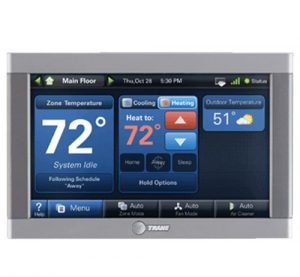Air leaks in the home are a major culprit when it comes to energy loss. Sure, each crack, gap or hole is most likely extremely small in size. However, each one can contribute to a very large cumulative problem in many houses. In some cases, poor weatherization can result in more than a 10% increase in your home’s energy bills. Fortunately, there are some ways to quickly fix many of these problems. As the cold months are upon us, it’s a great time to make sure your home is as weatherized as it can be.
Weather-stripping is one of the best, and simplest, ways to defend against a large amount of energy loss around your doors and windows. It’s certainly the most cost-effective. Not only does this inexpensive material stop heat from getting out, it also limits cold drafts from getting into the home, making your home much more comfortable. Weather-stripping can deteriorate over time, so it’s always a great idea to do a comprehensive check each year. Replacing the worn down or torn areas can save you big time even if these areas are small.
One great way to test your weatherstripping around doors is to close a door on a piece of paper. If you can slide the paper back and forth under or on the side of the door, the weatherstripping isn’t doing its job and should be replaced. Another option is to have someone stand just outside your door at night and shine a flashlight around the doorframe. If you can see light coming in when the door is closed, weather-stripping is missing or insufficient. Sometimes the bottoms of doors are troublesome because these gaps tend to be the largest. Investing in a door-sweep is a great complement to weather-stripping on the sides and top of the door.
For windows, you can hold a flame up near the edge of the window and slowly work your way around the frame. If the flame flickers in any spot around the weather-stripping on the frame, there are air leaks that need to be addressed. Even placing weather-stripping around just these smaller trouble areas can do wonders for your energy bill and indoor comfort.
Most weather-stripping today has adhesive strips right on the back of the material, making installation very simple. There are a few different materials used for weather-stripping as well. Look for the rubber-gasket variety. It is slightly more expensive, but does a great job molding itself to the exact specifications of the gaps and cracks in your home.
Weatherstripping is a simple, cheap and effective way to keep your home comfortable and your energy bills down. For any energy savings questions or more specific tips, you can contact the experts at BelRed today.







